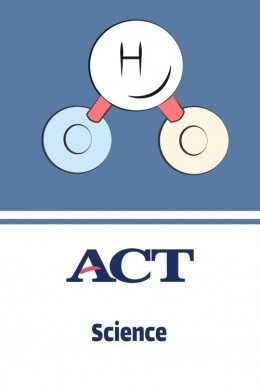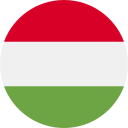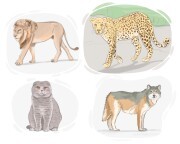Természettudományok ACT - Állati élet és evolúció
Itt megtanulsz néhány angol szót, amelyek az állati élettel és az evolúcióval kapcsolatosak, például "endemikus", "nappali", "toxicitás" stb., amelyek segítenek majd az ACT-k vizsgádon való jó teljesítményben.
Áttekintés
Villámkártyák
Betűzés
Kvíz


húsevő
A Vénusz légycsapó egy húsevő növény, amely rovarokat csapdába ejt és emészt, hogy tápanyaghoz jusson.

növényevő
Az elefántok nagy növényevő emlősök, amelyek ismertek a falevelek, füvek és egyéb növényi anyagok fogyasztásáról.

heterotróf
A heterotrófok olyan gombák, amelyek szerves anyagot bontanak le tápanyagok megszerzéséhez.

parazita
A maláriát egy parazita protozoon okozza, amelyet fertőzött szúnyogok csípése terjeszt.

ébredés
A medvék téli álmából való felébredés egy fokozatos folyamat, amelyet a hőmérséklet-változások befolyásolnak.

téli álmot alszik
Néhány hüllő üregekben téli álmot alszik, hogy túlélje a kemény téli körülményeket.

a toxic substance produced and secreted by certain animals, typically used for defense or hunting

toxicitás
A kutatók teszteket végeztek az új rovarirtó szer toxicitásának értékelésére a méheken.

erő
A természetes kiválasztás előnyben részesíti a magasabb potenciállal rendelkező egyedeket a túlélés és a szaporodás szempontjából.

élőhely
A panda élőhelye Kína hegyi bambuszerdei.

(of wild animals) hunting, killing, and feeding on other animals for survival

ökoszisztéma
Az Amazonas esőerdeje egy létfontosságú ökoszisztéma, amely szabályozza a globális éghajlati mintákat.

nappali
A nappali állatok, például a mókusok és a szarvasok, gyakran láthatók nappal, amint táplálékot keresnek és kölcsönhatásba lépnek természetes élőhelyükön.

éjszakai
A denevérek éjszakai lények, nappal alszanak és napnyugta után válnak aktívvá.

szürkületi
A madárfigyelők hajnalban gyűltek össze a természetvédelmi területen, remélve, hogy megpillanthatják a szürkületi baglyokat, amint visszatérnek fészkükhöz.

felöklendez
A baglyok felöklik zsákmányuk emészthetetlen részeit, például csontokat és szőrt, pellet formájában.

exoskeleton
A rovarok levedlik külső vázukat növekedésük során.

kihalt
A tudósok fáradhatatlanul dolgoznak azon, hogy megakadályozzák több faj kihalását a veszélyeztetett állatok és élőhelyeik tanulmányozásával és megóvásával.

háziasított
A háziasított macskák általában szoros köteléket alakítanak ki tulajdonosaikkal és értékes háziállatként tartják őket.

megőrzés
A kormány szigorú természetvédelmi törvényeket vezetett be az ország nemzeti parkjainak védelme érdekében.

klónozás
A klónozás lehetővé teszi a kutatók számára, hogy azonos sejteket állítsanak elő a laboratóriumban.

evolúciós
Az evolúciós elmélet magyarázza, hogy a fajok hogyan alkalmazkodnak a változó környezethez a természetes kiválasztódás révén.

primitív
A primitív állatok kövületei betekintést nyújtanak a Föld korai történetébe.

veszélyeztetett
Folyamatban vannak a természetvédelmi erőfeszítések a veszélyeztetett bengáli tigris élőhelyének védelme érdekében.

endemikus
A dengue láz endemikus Délkelet-Ázsia egyes részein.

masztodon
A masztodon az erdőket és síkságokat járta, fákkal és cserjékkel táplálkozva.

Neandervölgyi
A fosszilis bizonyítékok arra utalnak, hogy a neandervölgyiek alkalmazkodtak a hideg éghajlathoz Európában és Ázsiában.














